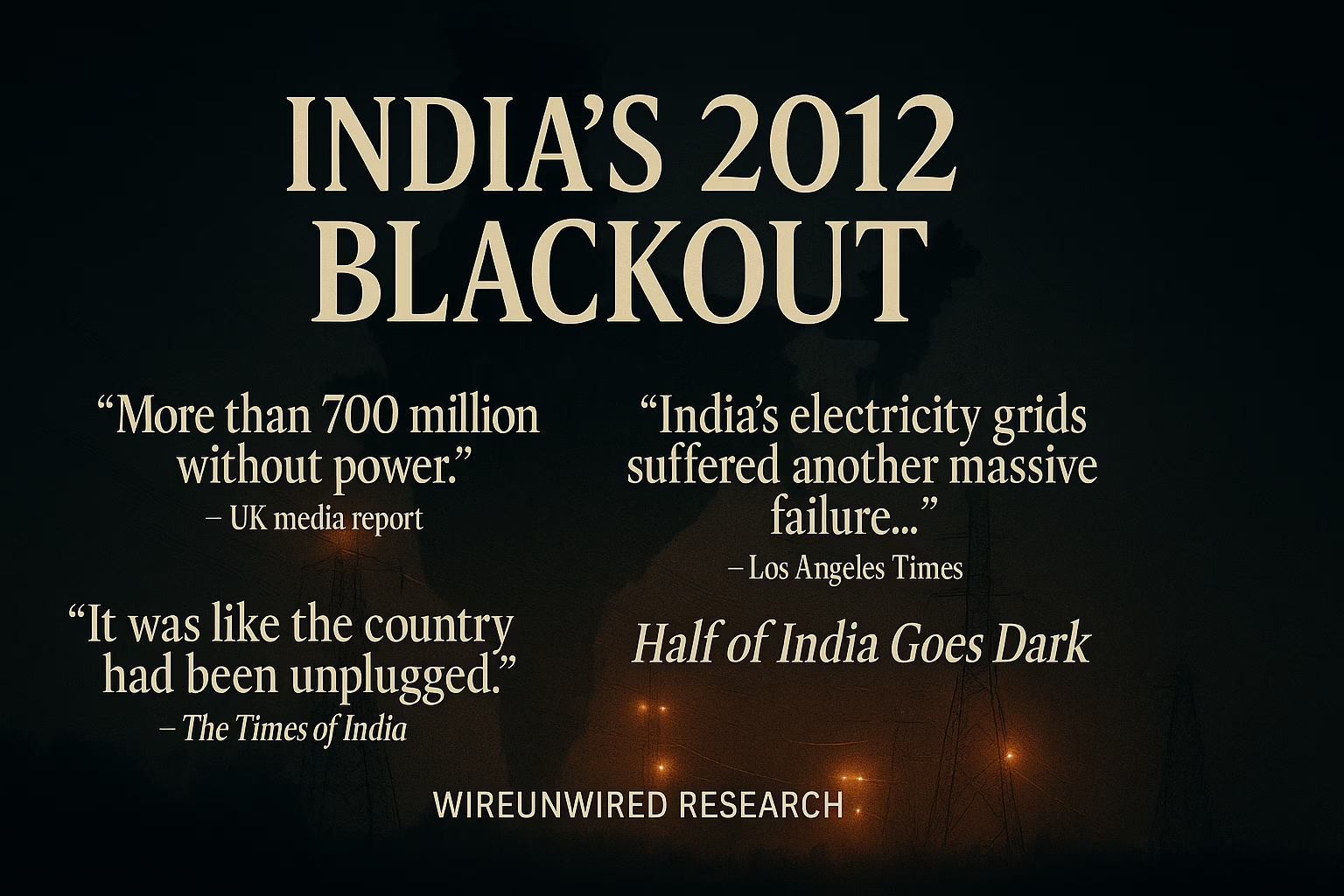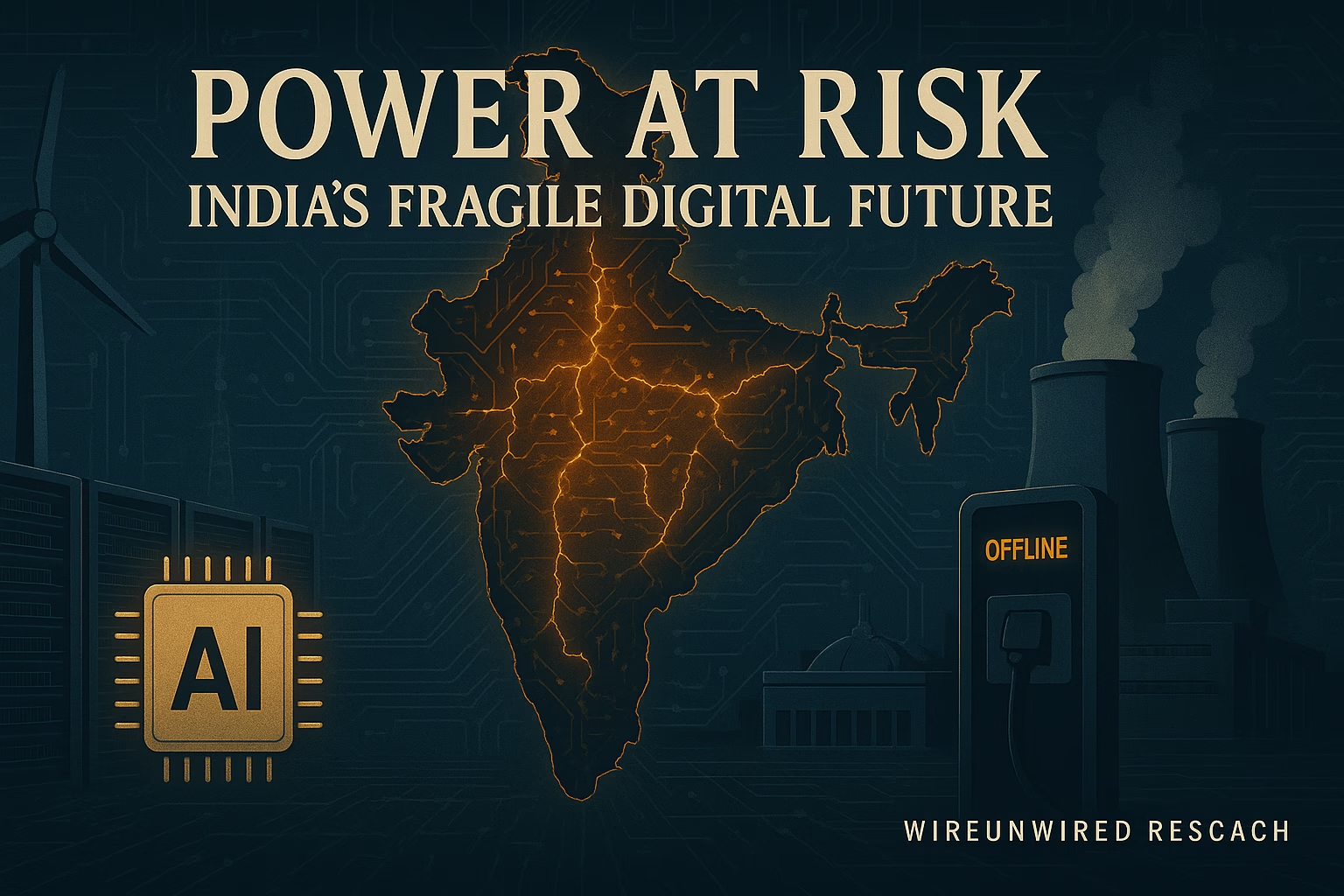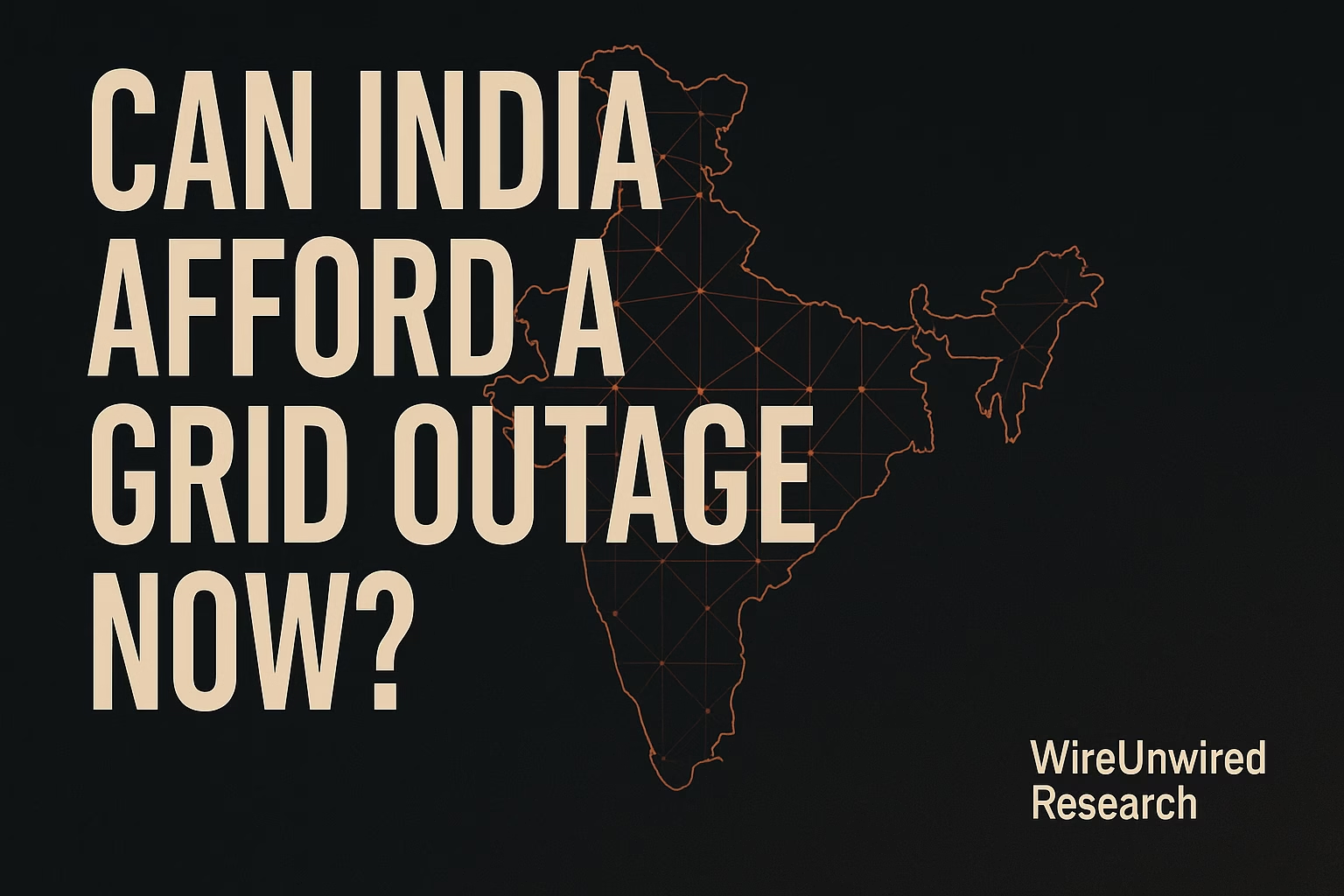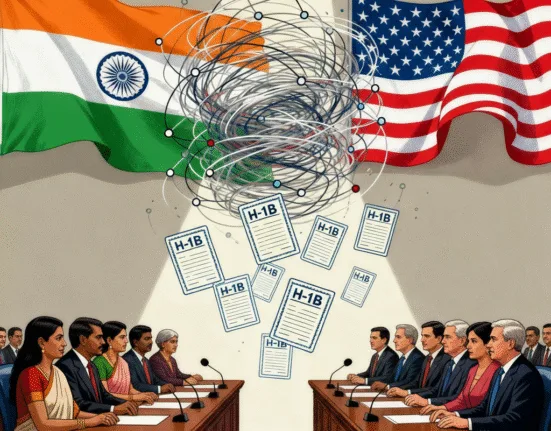
On April 28, 2025, a massive grid outage plunged large parts of Spain, Portugal, and southern France into darkness — killing at least eight people, halting communications, and exposing a fragile truth: even developed nations aren’t immune to large-scale blackouts.
As India races ahead with AI infrastructure, EVs, digital payments, and 24×7 industrial loads, the question isn’t “what if” — it’s can India afford a grid outage now? -WireUnwired
TRENDING
History of Grid Outage in India

India has already faced the kind of nightmare Europe just experienced — and on a far larger scale. On July 30 and 31, 2012, the country witnessed what remains the largest blackout in world history, affecting over 620 million people across 22 states. In just two days, three regional grids—Northern, Eastern, and North-Eastern—collapsed in succession. Delhi Metro services stopped mid-route, hospitals ran on diesel, and water supply in cities was cut off. Even traffic lights failed, plunging major intersections into chaos.
“More than 700 million people in India have been left without power in the world’s worst blackout of recent times,” reported The Guardian.
The Los Angeles Times described the sweltering paralysis: “India’s electricity grids suffered another massive failure… leaving more than 600 million people without lights, rail service or air conditioning in 90-degree heat.” One commuter summed it up in The Times of India: “It was like the country had been unplugged.”
The failure drew global attention—not just for its scale but for what it exposed. Then Power Minister Sushilkumar Shinde admitted,
“Everyone overdraws from the grid… states that overdraw should be punished.”
The Economist noted grimly: “Power cuts in India show that a lack of reform is beginning to hurt ordinary people.”
In response, the government initiated critical reforms. Chief among them was the creation of the ‘One Nation, One Grid’ system, aimed at synchronizing all five regional grids—Northern, Southern, Eastern, Western, and North-Eastern—into a single, unified network. This national grid was fully integrated by December 2013, enabling better load balancing, surplus power transfer, and real-time management across states.
But even with these structural upgrades and stricter grid codes, the deeper issue—an overstrained and under-upgraded infrastructure—was never fully resolved. In the years that followed, India saw smaller regional outages, including a 2020 incident in North India where a substation trip led to cascading blackouts in parts of Delhi and Uttar Pradesh. In 2021, cyclone-induced infrastructure damage knocked out power in parts of Kerala and Tamil Nadu, revealing how climate-linked events could cripple power delivery even in relatively well-prepared states.
Each of these events has been treated as an isolated disruption. But when seen together, they form a clear pattern: India’s grid is vast, deeply interconnected, and always at risk of being pushed too far—either by demand, weather, or mismanagement. As a 2012 Wall Street Journal headline bluntly put it: “Half of India Goes Dark.” The 2012 blackout was a warning, not just to India but to the world.
Why India is at a more risk of Grid Outage ?
On April 28, 2025, Europe faced one of its most sobering grid failures in recent memory. A massive blackout swept across the Iberian Peninsula, plunging mainland Spain, Portugal, Andorra, and parts of southwestern France into darkness. The power failure began at 12:33 p.m. CEST and lasted up to 10 hours in several regions, severely disrupting telecommunications, emergency services, and public transport.The blackout was swift and brutal — within five seconds, generation and demand plummeted from 25 GW to 10 GW. Tragically, eight people lost their lives, including victims of candle fires and generator exhaust fumes. For a continent with some of the world’s most modern infrastructure.
But wait … wont you be thinking, why am I talking about the recent European blackout …
Well, the reason is India is on a similar path to that of Europe.
At the time of the European outage, solar energy made up nearly 59% of Spain’s electricity supply. Though the precise cause is still under investigation, the event sparked immediate scrutiny into the fragility of highly renewable, low-inertia power systems.
India is moving aggressively in the same direction. With a national target of 500 GW of non-fossil capacity by 2030, the country plans to source 50% of its electricity from renewables. Already, states like Rajasthan and Gujarat are integrating vast solar parks, while Tamil Nadu and Karnataka are home to massive wind corridors. But like Spain, this fast transition introduces a structural weakness: renewable energy lacks rotational inertia
Unlike coal or gas plants, solar and wind energy lack physical inertia — the stabilizing force that keeps grid frequency within safe limits. Traditional thermal plants have heavy rotating turbines that automatically buffer the grid against sudden load changes. Renewables, being inverter-based, don’t offer this mechanical resistance. This makes the grid more prone to frequency spikes and voltage swings, especially when large-scale renewable energy is injected or withdrawn due to changes in weather. A cloud passing over a solar farm or a lull in wind speed can now destabilize entire regions if not managed with precision. — the invisible cushion provided by spinning turbines in coal and gas plants that helps stabilize frequency during sudden shifts.
Without enough grid-scale batteries or responsive backup power, even a minor fault can escalate into cascading blackouts, especially when combined with India’s vast and uneven transmission network.
And while India’s digital and industrial push is surging forward — with EV charging corridors, AI data centers, and 24/7 chip fabs — the physical grid supporting this ambition is aging, fragmented, and under strain. What failed in Spain despite modern systems could falter faster in India unless resilience is built into the foundation.
The Iberian crisis was not just Europe’s warning. It was India’s too.
Who’s Most at Risk?

India’s most vulnerable regions are those heavily reliant on renewable energy without sufficient grid backup. States like Gujarat, Karnataka, and Rajasthan, where solar and wind energy contribute a significant share to the grid, are particularly exposed. Here, the sudden loss of generation due to cloud cover or shifts in wind can lead to immediate frequency imbalances, especially during peak demand hours.
However, beyond these regions, newer technologies are at risk as well. Data centers, which have become critical for India’s digital transformation, depend on 24/7 stable power. With cloud services, AI models, and big data analytics driving the economy, any power disruption could paralyze industries and services relying on continuous uptime.
EV charging infrastructure is another emerging vulnerability. As India pushes toward electric mobility, the expansion of EV chargers across urban areas increases demand for uninterrupted power. A grid outage could halt these services, undermining the progress made in cleaner transportation.
Cities like Delhi and Mumbai, which have become smart cities, are also at risk. These cities, powered by a mixture of AI-driven infrastructure, smart grids, and critical services like hospitals and public transport, are highly dependent on stable and reliable electricity. Any disruption could lead to major losses — not just economically, but also in terms of human safety.
What Must Be Done?
India must urgently focus on three key areas:
Grid Infrastructure Upgrades: Expand inter-state transmission networks and invest in smart grid technologies that can manage intermittent renewable power sources in real time. A robust high-voltage transmission network, capable of handling large surges, is essential for stabilizing regions with variable renewable generation.
Energy Storage: To balance the variability of renewables, India must significantly ramp up investments in grid-scale batteries and other energy storage technologies. These can store excess power during peak production times and release it during high-demand or low-generation periods.
Grid Flexibility: Demand response systems, where consumers adjust their power usage based on grid needs, must be widely adopted. These systems, combined with more flexible backup generation options (such as gas turbines or distributed microgrids), can help prevent sudden collapses.
Conclusion: Can India Afford a Grid Outage Now?

The short answer is: No, India cannot afford a grid outage now — especially not one on the scale of the 2012 blackout or the more recent Iberian Peninsula outage in 2025. The country’s increasing reliance on renewables, coupled with outdated infrastructure, insufficient energy storage, and lack of grid flexibility, places India’s power grid at significant risk.
While India has made tremendous progress with initiatives like One Nation, One Grid, and increasing renewable energy integration, it must act swiftly to address the weaknesses exposed by these global outages. The potential for cascading failures — similar to the Iberian crisis — is very real. An outage today would disrupt critical infrastructure, including the smart cities, AI-powered industries, and digital systems the nation is building, causing severe economic and social consequences.
In conclusion, India needs to act decisively to ensure that the power grid can handle its green energy transition without risking the stability of its entire economy. Investments in grid upgrades, energy storage, and demand flexibility are crucial if the country is to continue growing without the looming threat of another devastating blackout.
Discover more from WireUnwired Research
Subscribe to get the latest posts sent to your email.










